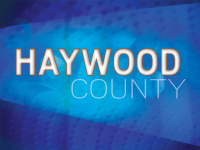Shutdown ignites strong feelings about public lands
 By Sarah Kucharski • Columnist
By Sarah Kucharski • Columnist
The government shutdown went into effect on the first night I arrived in Yosemite National Park. There was no phone call at midnight, no note on the door in the morning. The birds still chirped, and the redwood trees still perfumed the air. Yet there was a great sense of angst. At the park hotel’s front desk, I was just one of many tourists asking what to do next — do we stay, or do we go? The road to Glacier Point already had been closed, making the day’s planned hikes impossible. The stables were shuttered too, which meant no mule rides. Restaurants and retail operations within the valley would be closing during the next 48 hours. And so we packed our bags, shoved everything back into our rental car, and left.
We drove along Tioga Pass, clambering the rocky landscape at Olmstead Pass (as my husband says, “Man, that Olmstead guy sure got around”) and sunning ourselves at Tuolumne Meadows, but by the time we turned around to make our way to the California coast, evidence of the park’s closure had become overwhelming. Yellow caution tape, an unnatural blight on the landscape, flapped in the breeze, waving tourists away from parking lots and picnic tables along the route. Orange road cones seemingly multiplied by the hundreds, and as we emerged from the narrow gorge marking the eastern entrance nearest Merced, a large electronic sign flashed the unwelcoming message: PARK CLOSED.
Instead of enjoying Yosemite, we went to the shore and took the Cabrillo Highway almost down to Point Sur, gladly paying the $10 fee to enter Point Lobos State Reserve at low-tide to noodle about the tide pools and stopping at Carmel River State Beach where I took a phone call from my parents, who were packing for a trip to the Southwest’s great canyons and were now unsure if they would be able to carry out any of their own national park plans. They told me of the Great Smoky Mountains National Park’s closure and banners of yellow caution tape and armies of orange cones mocking the autumn’s onset of colors, the season’s reds echoed in the region’s falling tourist revenue.
Frankly, I was mad. And I became angrier while on an excursion with a group of travel writers this past week — writers from across the U.S. and Canada — all of whom were prevented from entering the Smokies, from experiencing its magic, from sharing the national treasure with their readers. And as I stood on top of Newfound Gap telling a writer from Charleston about a grove of beech trees that turn everything around them a glorious golden hue not too far up along the Appalachian Trail, I used a particularly important word — my. It was MY park that was closed. MY mountains that were off limits.
Related Items
I admit that I do not like being told “no” and find a certain fierceness arises in me as a result of it. It is this fierceness that I wish to harness. Only by taking ownership, taking pride in our public lands — wherever they may be — will we be able to preserve them for future generations. We must be stewards of our parks, our places. Now as the yellow and orange barricades have fallen down, let us lift our Great Smoky Mountains up out of the red, invite ourselves and others to be visitors, and celebrate our open park with open hearts.
(Sarah Kucharski is the managing editor of the nationally distributed magazine Smoky Mountain Living, a sister publication of The Smoky Mountain News. She can be reached at This email address is being protected from spambots. You need JavaScript enabled to view it..)









